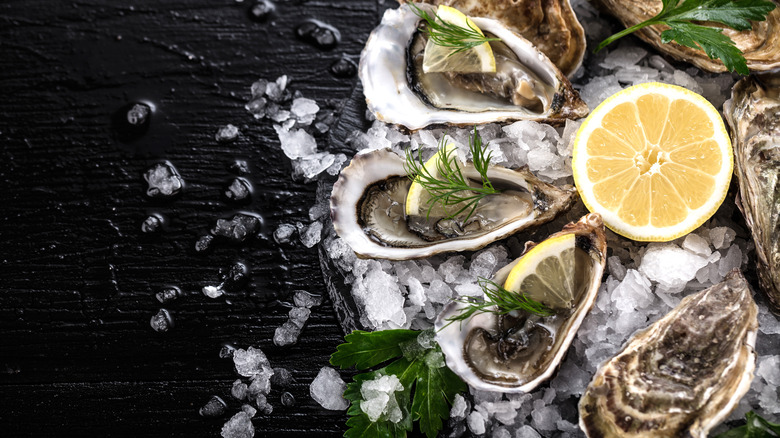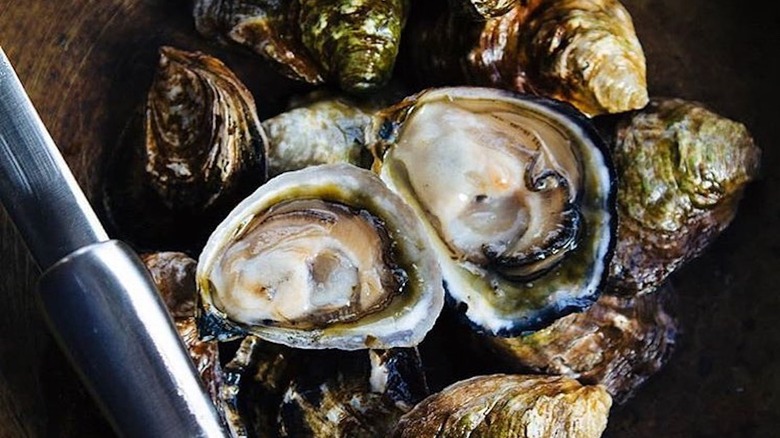The Rare Oyster Variety That Was James Beard's Favorite
Enjoyed raw and freshly shucked on the half shell, or baked, grilled, roasted, or smoked, oysters have been a delicacy since ancient times. In North America alone, you can find more than 150 types that are harvested and sold locally, though they all come from just five species of oysters, notes Chef's Resources: the Atlantic or Eastern (Crassostrea Virginica), European Flat or Belon (Ostrea edulis), Kumamoto (Crassostrea sikamea), Pacific (Crassostrea gigas), and Olympia (Ostrea lurida). And out of these five species, only two are actually native to North America: the Atlantic oysters on the East Coast, and the Olympia oysters on the West Coast.
While Atlantic oysters (which includes the likes of Blue Points, Wellfleet, and Malpeques) tend to be large and briny, with a "crisp texture...and a savory finish," Olympias are much smaller, with "a creamy texture and strong flavors of sweet celery and bright copper with a long lasting metallic finish," per Chef's Resources. According to writer Anna Roth, "[c]onnoisseurs consider Olympias gods among oysters" (via Native Olympia Oyster Collaborative). Those connoisseurs included the likes of Mark Twain, who loved Olympias and enjoyed "oysters by the bushel," and James Beard, who likened them to "one of the supreme delights that nature has bestowed upon man," per the Social Register Online, and who was known to enjoy them butter-fried as part of an Olympia Biscuit slider.
Olympia oysters are hard to come by
At one point, Olympias, also known as Olys, were plentiful on the West Coast, and could be found from Alaska to Baja California. Native populations feasted on the briny bivalves, as evident by massive midden piles they left behind, according to Eater. Gold rush forty-niners also developed a taste for them. However, it was hydraulic mining that nearly killed off the Oly population, with silt from the Sierra Nevada Mountains flowing down to bury wild Oly beds in the Bay (via Smithsonian Magazine). Later on, paper mills in Washington would discharge harmful chemicals into the Puget Sound and destroy nearly all the Oly beds there in the first half of the 20th century, recounts the Seattle Times.
However, thanks to restoration efforts in California, Oregon, and Washington, Olys are starting to make a slow comeback. Despite impressive strides, Olys are still pretty rare and difficult to find. According to Smithsonian Magazine, it takes three to four years for Olys to reach harvestable size (2.5 inch minimum in Washington State), even under ideal farmed oyster conditions. So if you're lucky enough to get your hands on some Olys, be sure to follow these absolute best ways to keep oysters fresh, or better yet, enjoy them as soon as possible. And hold the oyster fork if you're enjoying them at a fancy restaurant.

